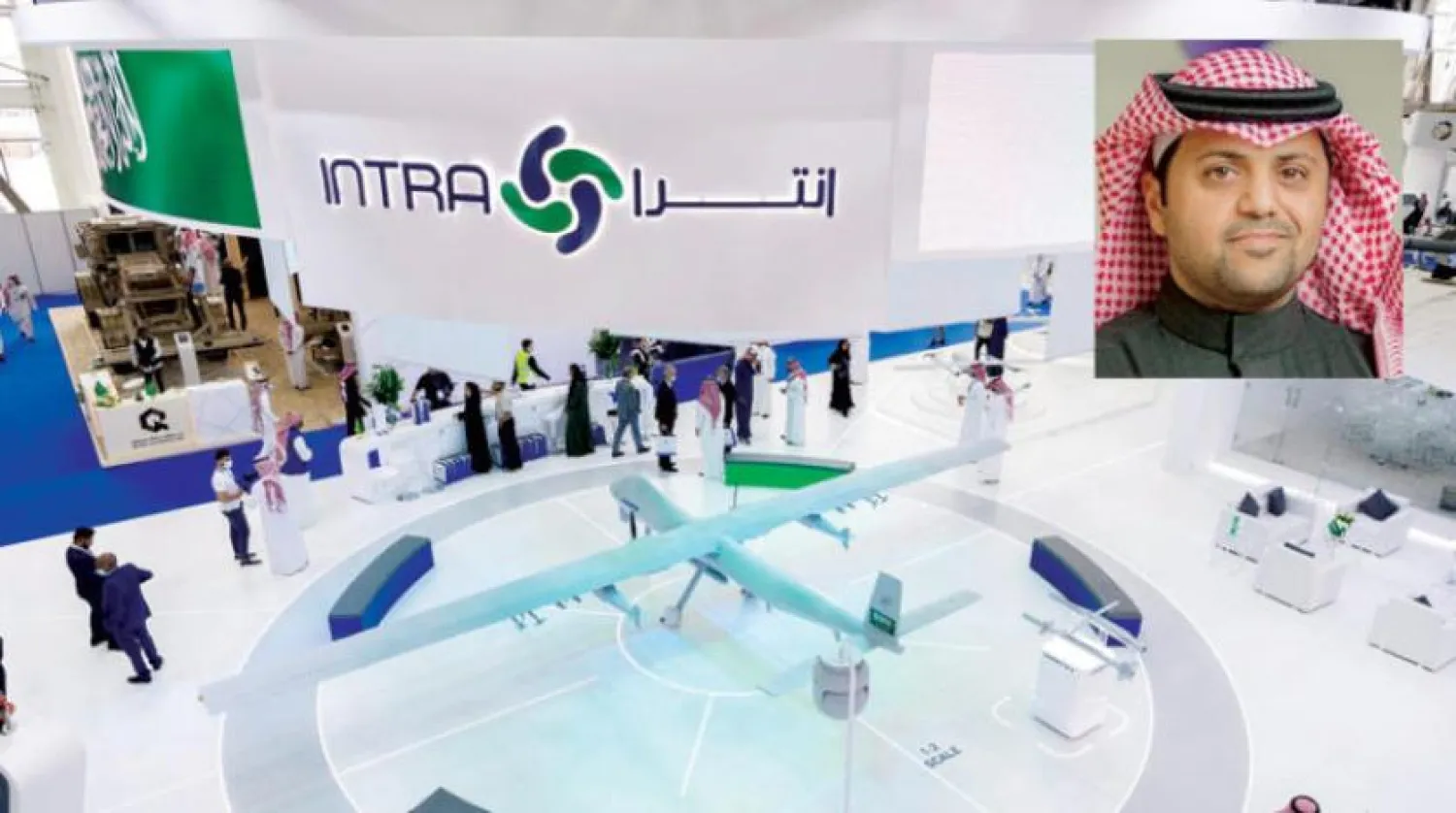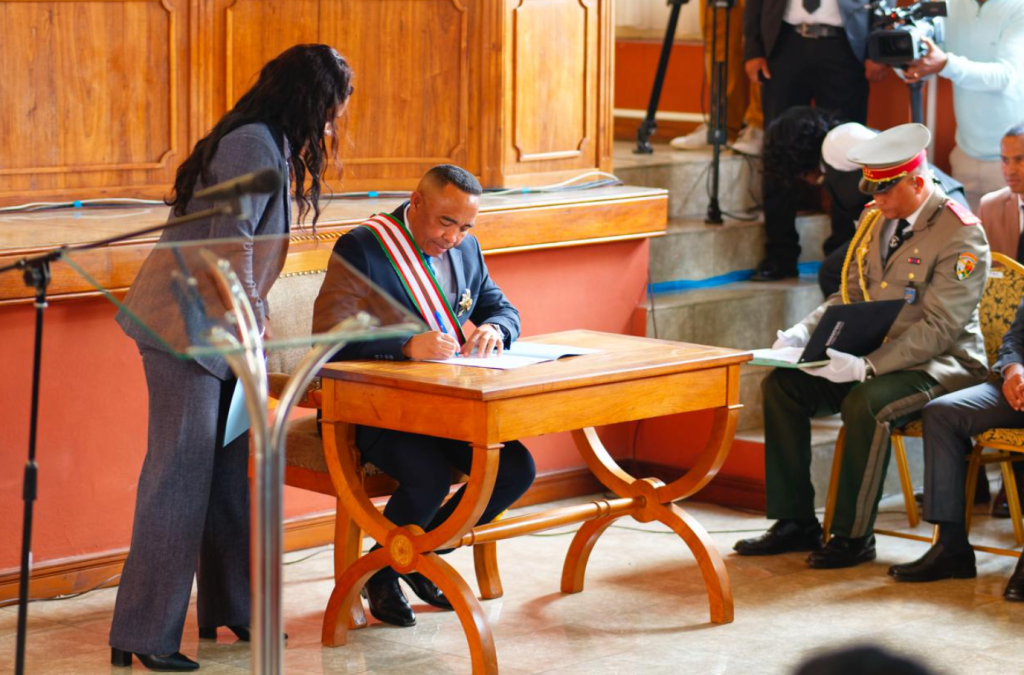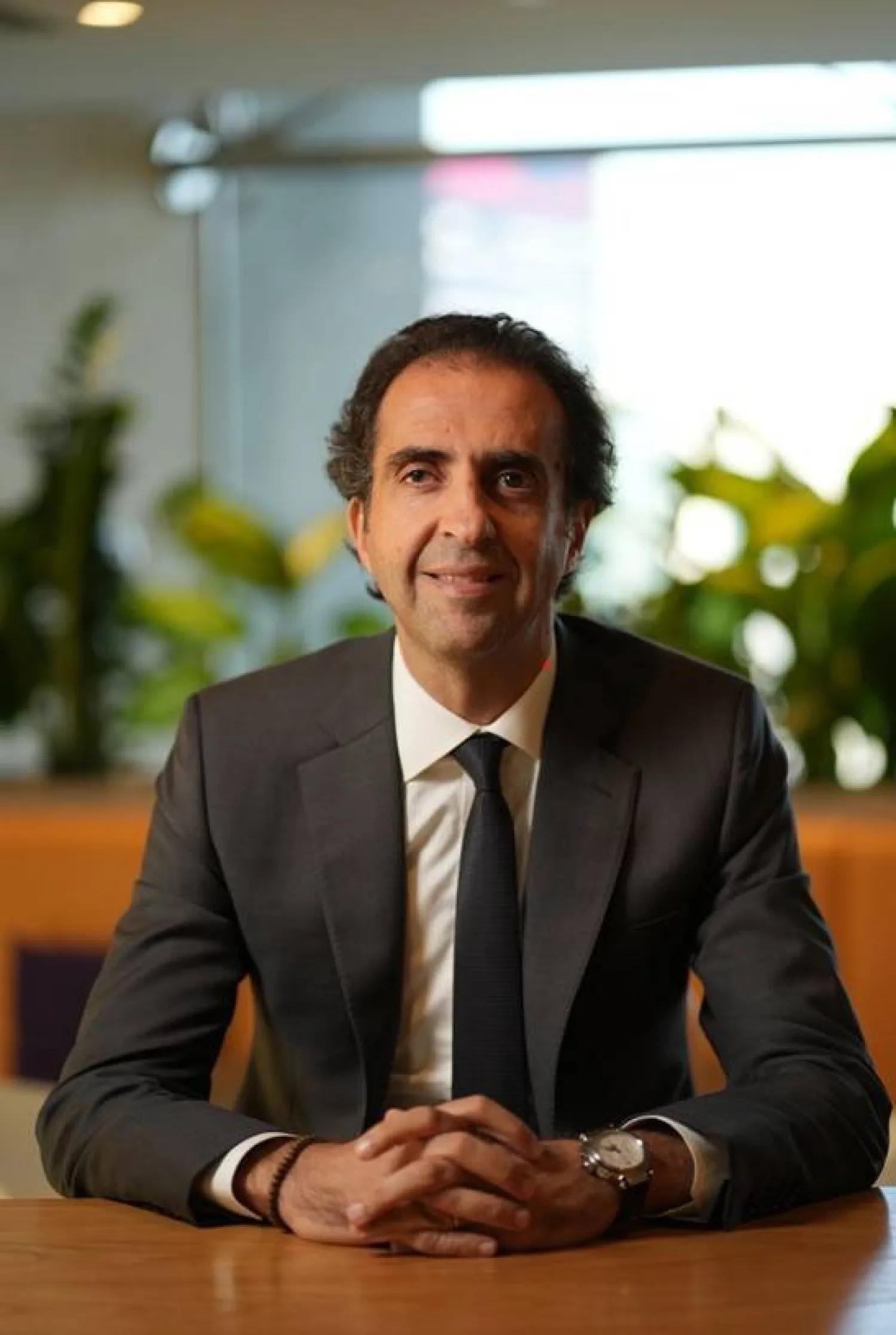This happens only in thrillers. A religious leader summons an obscure army officer and meets him for the first time two days before a planned coup. He appoints him president with an unprecedented line, “You will go to the palace as president, and I will go to prison as a detainee.”
That is what happened on June 30, 1989. The officer, Omar al-Bashir, went to the presidential palace while security forces took Dr. Hassan Al-Turabi to the notorious Kober Prison along with other political leaders.
Al-Turabi’s “ruse” aimed to conceal the Islamic nature of the coup so that near and distant governments would not rush to isolate it. Intelligence agencies in neighboring states, including Egypt, fell for the deception and assumed that Bashir had seized power at the head of a group of nationalist officers. Cairo recognized the new regime and encouraged others to follow.
This happens only in stories. A young man landed at Khartoum airport carrying a passport that said his name was Abdullah Barakat. He arrived from Amman. One day he would knock on Al-Turabi’s office door, though Al-Turabi refused to see him.
Soon after, Sudanese security discovered that the visitor was a “poisoned gift,” in Al-Turabi’s words. He was the Venezuelan militant known as Carlos the Jackal, a “revolutionary” to some and a “notorious terrorist” to others.
He led the 1975 kidnapping of OPEC ministers in Vienna under instructions from Palestinian militant Dr. Wadie Haddad, an architect of aircraft hijackings. One night, and with the approval of Al-Turabi and Bashir, French intelligence agents arrived in Khartoum. Carlos awoke from sedatives aboard the plane taking him to France, where he remains imprisoned for life.
Bashir’s government was playing with explosives. In the early 1990s, it also hosted a prickly young man named Osama bin Laden, who after Afghanistan was seeking a base for training and preparation. He arrived under the banner of investment and relief work. Mounting pressure left bin Laden with no option but to leave.
This happens only in thrillers. The leadership of the National Islamic Front gathered with its top figures, Bashir, and security chiefs. The occasion was the assassination attempt against Egyptian President Hosni Mubarak in Addis Ababa.
Ali Osman Taha, Al-Turabi’s deputy, stunned attendees by admitting that Sudanese security services were linked to the attempt. Those present understood that he had been one of its sponsors. Neither the sheikh nor the president had prior knowledge.
After the attempt, some proposed killing the operatives who had returned from the Ethiopian capital to eliminate any trail that could incriminate the Sudanese regime. Al-Turabi opposed the assassinations. The impression spread that Bashir supported the killings and signs of a rift between him and Al-Turabi began to appear.
The split later became formal in what came to be known as the “separation” among Islamists. Power is a feast that cannot accommodate two guests. Bashir did not hesitate to send to prison the man who had placed him in the palace. Al-Turabi did not hesitate to back Bashir’s handover to the International Criminal Court. Al-Turabi tasted the betrayal of his own disciples. Disciples, after all, are known to betray.
This happens only in thrillers. Through Al-Turabi’s mediation, Osama bin Laden agreed to meet an intelligence officer from Saddam Hussein’s regime named Farouk Hijazi. The meeting produced no cooperation, but it became one of the early arguments George W. Bush used in 2003 to justify the invasion of Iraq.
Hijazi also met senior Sudanese security officials who later visited Baghdad and were warmly received, and it became clear that Ali Osman Taha was among Saddam’s most enthusiastic admirers.
Sudanese blood now flows like the waters of the Nile. Bodies scattered on the streets of el-Fasher are almost making the world forget the bodies buried under the rubble of Gaza. Hard men are pouring fire onto the oil of ethnic and regional hatreds. Making corpses is far easier than making a settlement, a state, or institutions.
Since independence, Sudan has been a sprawling tragedy. Because the present is the child of the recent past, searching for a witness who knows the game and the players, and journalism leads to meeting and interviewing the experienced politician and researcher Dr. El-Mahboub Abdul Salam.
For a decade he served as Al-Turabi’s office director. For another decade, he wrote some of Bashir’s speeches.
In recent years, his bold conclusions stood out, including that Sudan’s Islamic movement has exhausted its purposes, that it shares responsibility with other elites for the country’s condition, and that it erred in dealing with others just as it erred when it chose the path of coups, violence, ghost houses, and contributed to pushing the South outside Sudan’s map.
Abdul Salam does not hesitate to scrutinize Al-Turabi’s own mistakes and his passion for wielding power. I sat down for an interview with him, and this is the first installment.
Abdul Salam was a first-year university student when Al-Turabi’s ideas caught his attention. Al-Turabi then appeared different, moving outside Sudan’s traditional social divides. He also knew the West, having studied in Paris and London. In 1990, Abdul Salam became Al-Turabi’s office director until the end of that decade.
Abdul Salam recalled: “I am often asked this question, are you a disciple of Al-Turabi? I have told them more than once, yes, I am a disciple of Al-Turabi, a devoted one. But I graduated from this school and became an independent person with my own ideas and experiences, perhaps broader than those of the Islamic movement’s earlier leaders.”
Asked about when he discovered Al-Turabi’s mistakes and developed a critical sense toward his experience Abdul Salam said that it was “perhaps in 2011, with the ‘Arab Spring’, and the Egyptian revolution in particular and the change that took place in Egypt.”
A tense beginning
Abdul Salam said Al-Turabi’s relationship with Egyptian President Hosni Mubarak began on polite terms when they met in 1986 during an Al-Azhar conference on the Prophet’s biography. At the time, he recalled, Cairo was hostile or deeply wary of the Sudanese government under Sadiq al-Mahdi. The meeting, in his words, “was more courtesy than substance.”
According to Abdul Salam, relations later deteriorated sharply because of the deception surrounding the 1989 coup, then worsened further after the 1995 assassination attempt against Mubarak in Addis Ababa.
The Addis Ababa shock
Abdul Salam recounted that a major political meeting was convened after the failed attempt, held at the home of Ali Osman Mohammed Taha and attended by Al-Turabi, Bashir and all senior leaders. He said that during this gathering, both Bashir and Al-Turabi learned “for the first time” that Sudanese security services and Al-Turabi’s own deputy had been involved in the operation without informing them, describing the moment as a “huge shock” to the leadership.
He said Taha admitted at the meeting that the security services were involved and that it later became clear he himself was implicated. When a proposal emerged to kill the operatives returning from Ethiopia to erase evidence, Abdul Salam said Al-Turabi “rose in fierce opposition,” calling the idea outside both politics and Sharia. He cited Dr. Ali al-Haj as saying this moment “marked the beginning of the split.”
Egyptian intelligence reassesses Sudan
Abdul Salam describes how the Sudanese and Egyptian intelligence services eventually moved toward reconciliation. He said Omar Suleiman, Egypt’s intelligence chief, sent a message through French intelligence stating that the attack had been carried out by Egyptian Islamist groups.
According to Abdul Salam, Suleiman maintained that Sudan had only provided what he described as logistical support including money, shelter and weapons, rather than planning or executing the attack. This understanding, he says, prevented Egypt from responding harshly.
The communication opened a door for “major repair” of relations, Abdul Salam added, as Sudan began presenting itself as a pragmatic government after distancing itself from Al-Turabi.
After 1999: Rapprochement with Cairo
The reconciliation with Egypt and the region, Abdul Salam noted, took shape after 1999. He recalled that Taha’s visit to Cairo came after that date, followed by a visit from intelligence chief Salah Gosh. Foreign Minister Mustafa Osman regularly traveled to Egypt and maintained a friendship with his Egyptian counterpart, further improving ties.
The memorandum that shifted power
Abdul Salam described the turning point in relations between Bashir and Al-Turabi as the “Memorandum of Ten” in October 1998. During a major Shura gathering attended by hundreds of party, state and tribal leaders, ten members presented a document calling for the removal of Al-Turabi and the installation of Bashir as both head of state and leader of the movement.
He said the memorandum included reform language, but its essence was ending dual leadership. Bashir, according to Abdul Salam, “conspired with the ten” and accepted the proposal, calling the conspiracy “clear and very public.”
Abdul Salam recounted that Bashir wanted to confine Al-Turabi to a symbolic role and that some officers close to Bashir even asked Al-Turabi to remain as a spiritual figure who would bless decisions made elsewhere. “Al-Turabi would not accept this,” he stressed.
Al-Turabi’s influence and gradual reemergence
Reflecting on the early years of the Salvation regime, Abdul Salam said Al-Turabi authored all strategic decisions while the government handled daily business independently. He avoided public appearances during the first five years, he recalls.
Abdul Salam added that Al-Turabi gradually reemerged and became speaker of the National Assembly in 1996. He said Al-Turabi’s influence “never truly faded” because of his charisma, knowledge and strong presence, and diminished only when he was imprisoned after the split.
The 2001 Memorandum and South Sudan
Abdul Salam said Al-Turabi was arrested after the signing of a memorandum of understanding with the Sudan People’s Liberation Movement in February 2001. He confirmed he personally signed the document.
Asked whether he felt responsible for South Sudan’s independence, Abdul Salam rejected the suggestion. He said his position was clear and aligned with Sheikh Rached Ghannouchi, who argued that unity required suspending the hudud laws introduced under President Jaafar Nimeiri. Abdul Salam told southern leaders that unity should take precedence over maintaining those laws, adding that Islamic legislation, like all legal systems, is shaped by its psychological and historical context.
Complicated relationship
Abdul Salam described the relationship between Al-Turabi and his deputy Ali Osman Taha as complex and shaped by long-standing philosophical differences. He recalled a sharp split within the Islamist movement in 1968 when Taha aligned with figures who believed Al-Turabi had grown too dominant.
He cited Taha’s personal doctrine as follows: if an individual disagrees with the organization he sides with the organization, if the organization disagrees with the state he sides with the state, and if the state disagrees with Islam he sides with Islam. Al-Turabi, Abdul Salam said, did not operate that way and pursued his own ideas regardless of circumstance.
Abdul Salam recalled that during the Salvation regime, Ahmed Osman Maki had originally been prepared to succeed Al-Turabi but later moved to the United States. He stated that Maki’s strong charisma may have made him unsuitable as number two, while Taha excelled at concealing his emotions and functioning as deputy. He said the two leaders worked in outward harmony during the early years of the regime before deep differences surfaced later.
Abdul Salam added that Taha admired Saddam Hussein’s model of governance and believed Sudanese society was not ready for liberalism or pluralism.
The Arab Spring and the Islamic movement’s decline
According to Abdul Salam, the Arab Spring was “harsh on the Islamic movement.” Although the regional wave ended around 2012, Sudan’s version of it erupted in 2019. He said the uprising struck Islamists hard and reflected the real sentiment of the Sudanese street.
He argued that during its years in power, the Islamic movement held a barely concealed hostility toward civil society, youth, women and the arts. Sudanese intellectual and cultural life, he said, naturally opposed the regime’s long authoritarian rule. The revolution’s slogans of peace, freedom and justice were not part of the movement’s vocabulary, and over time the movement evolved into a posture “contrary to Sudanese society.”
The Communist Party’s influence
Abdul Salam said the Sudanese Communist Party helped shape opposition to the Salvation regime. After the execution of its leaders in 1971, the party underwent major transformation, and after the collapse of the Soviet Union it fully embraced liberalism. He remarked that many young Sudanese seeking freedom, justice and an expanded role for women found the Communist Party closer to their aspirations than the conservative Islamist movement.
Responsibility for Sudan’s political impasse
Abdul Salam rejected the narrative that Sudan’s decades of military rule make the military solely responsible for the country’s crises. He stressed that responsibility also lies with the civilian elite. Officers were part of this elite, and civilians who supported them in government shared responsibility. Sudan’s civilian parties, he argued, lacked clear programs to address longstanding distortions inherited from the colonial era.
One of Abdul Salam’s most sensitive moments with Al-Turabi occurred on the eve of the Islamist split. He said he personally succeeded in arranging a meeting between Al-Turabi and Bashir after months of estrangement, trying to avoid complete rupture. Bashir proposed turning the party conference into a political showcase while setting aside differences. Al-Turabi agreed, but according to Abdul Salam, disagreements reappeared by the end of the day.
Writing Bashir's speeches and choosing a side
Abdul Salam described his relationship with Bashir as very good and said he wrote the president’s speeches from early 1990 until the late 1990s. The speeches reflected the movement’s overall positions.
When the split occurred, Abdul Salam aligned with Al-Turabi not on personal grounds, but because he shared his positions on democracy, public freedoms, federal governance and adherence to agreements with the South.
Abdul Salam said the relationship between Al-Turabi and Bashir resembles other regional cases involving a sheikh and a president only to a limited extent. Bashir was originally a member of the Islamist movement led by Al-Turabi and obeyed him even after becoming president.
The split emerged naturally once the visible authority of the presidency clashed with the hidden authority of the movement, “which was the one truly governing,” he said.










